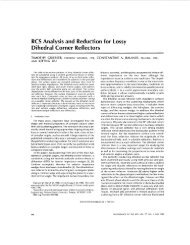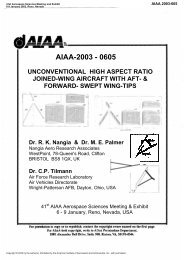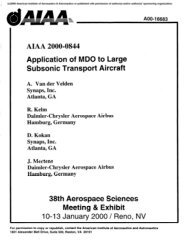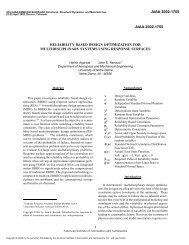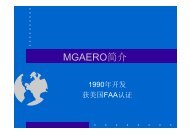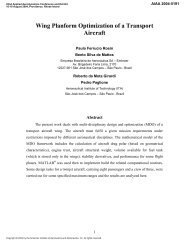The design report
The design report
The design report
Create successful ePaper yourself
Turn your PDF publications into a flip-book with our unique Google optimized e-Paper software.
Material type was chosen for each component. <strong>The</strong> components that were going to carry<br />
maximum load were ply, paulownia was used where some load would act. Balsa was<br />
used where minimal load would act and for components that were merely for providing<br />
shape.<br />
Most of the ribs were 2mm thickness except the ones on top the fuselage which carried<br />
maximum load and therefore they were 4mm thick. Ribs were of all three types ply,<br />
paulownias and balsa depending on the amount of load they were carrying. Webspars<br />
were 3mm thick. <strong>The</strong> spar caps at the front and at 30% chord were 6mm x 6mm pine<br />
rods. All webbing was 2mm balsa. Rear end sheets were 2mm balsa because their<br />
purpose was to provide shape and contact surface for the film.<br />
<strong>The</strong> following figures from 4.1.117 to figure 4.1.122 show the materials used for the<br />
wing components. Blue colour is for balsa, green for ply, pink for paulownias, black for<br />
carbon rod and yellow for pine.<br />
Figure 4.1.117 Figure 4.1.118<br />
Figure 4.1.119 Figure 4.1.120<br />
Figure 4.1.121 Figure 4.1.122








![Introduction to RF Stealth [Book Review] - Antennas and ...](https://img.yumpu.com/16857890/1/190x245/introduction-to-rf-stealth-book-review-antennas-and-.jpg?quality=85)

